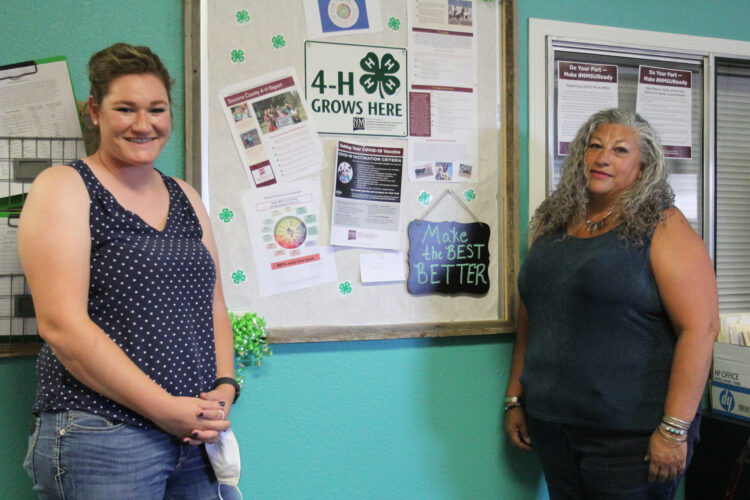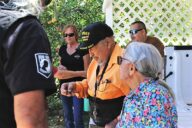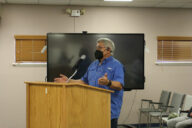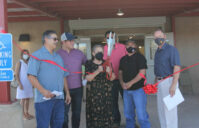
Socorro County Extension Program director Emily Bruton and Administrative Assistant Janice Bernal both enjoy working for the extension office. The office is a resource for community questions about agriculture, as well as the home base for the county’s 4-H program.
Cathy Cook | El Defensor Chieftain
4-H offered students structure and a sense of normalcy in a very unusual year, said Socorro County Extension Program Director and the Agricultural and 4H Agent Emily Bruton.
“Kids with livestock projects are able to get up in the morning and know that they have a routine that they’re going to go through and that their animal is consistent in their life,” said Bruton.
There are 112 kids in Socorro County’s 4-H program. During the pandemic, kids received activities sent through email and Facebook that they could complete on their own. Over 180 projects were done over the summer of 2020, said Brunson. Despite the pandemic, kids with livestock projects were still able to exhibit their animals.
Bruton started her time with 4-H with all virtual programming. She became the Socorro County Extension Program Director in March 2020. Originally from Catron County, Bruton was heavily involved in 4-H growing up. That led her down the path to an animal science degree. Her husband is a Socorro farmer.
The pandemic has given the program new tools to do innovative programming, said Bruton.
“I think there’s a lot of good things that came out of it, in terms of getting us all to think out of the box and making sure that we’re looking at individual kid’s needs when it comes to programming.”
Zoom is one tool that has come in handy. On a county level, she’s not sure those distance meeting tools will come into play as programming returns to in person, but on a state and even national level, she believes some virtual programming might allow kids access to conferences and forums they couldn’t access in previous years.

Despite the pandemic, most kids in 4-H still did livestock projects last year.,
Photo courtesy of Emily Bruton
Livestock projects can be a full-year project for steers, or from April through October for smaller livestock. Despite the pandemic, most kids still got livestock projects in 2020 and were able to exhibit their animals at a county fair.
“It didn’t cause as much upheaval as you might think in terms of them being able to show them and get them sold,” said Bruton.
This year most programming is back in person and 4-H is about to enter its busy season. With shooting competitions on Sunday and project judging on Tuesday, 4-H students have a lot to do.
4-H program assistant Trisha Chavez has seen the impact 4-H has on kids with her own daughter.
“She was painfully shy and we got her into 4-H and it turned her around.. so I see on a personal level what it’s done for my daughter and now having this job I see what it’s done for other kids and other families,” said Chavez.
Of course, 4-H is not the only service the extension office is responsible for.
Bruton is also a resource for the community on agricultural education. She finds the answers to agricultural questions, whether it’s a producer having issues with their chile crop or a home gardener who’s having issues with their tomatoes. If Bruton doesn’t know the answer, she reaches out to one of the many specialists at NMSU who can find answers for a specific topic.
She also creates programming to address agricultural needs she identifies in the community.
The extension office also offers community development programming to target issues within the community outside of agriculture. In May, the extension service held a kitchen creations cooking class for people with diabetes. The extension office’s Nutrition Educator Veronica Padilla brings nutrition and cooking ideas to local schools through the Ideas for Cooking and Nutrition program.





















